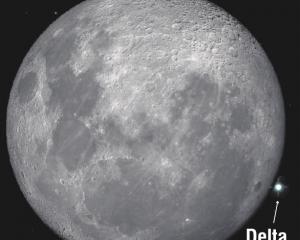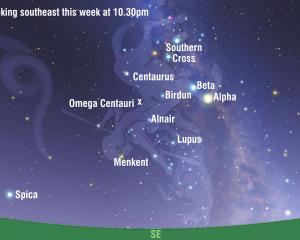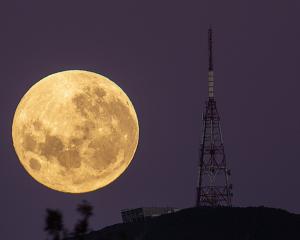There has been a run of clear nights in Dunedin recently, and with the sun setting a few minutes after 5pm this week, you don't have to stay out very late to enjoy some fine views of the night sky.
This evening, the waxing gibbous moon, which is in the constellation Leo, will be approximately 60% illuminated. Being just past first quarter, bright moonlight, will be washing out many of the dimmer stars in the sky. However, despite the moonlight it should certainly be possible to pick out the brighter stars.
That is why I would like to encourage you to head out after dark tonight and take a tour of a vast swathe of the northeastern sky, where there is a lot on offer for keen stargazers.
Assuming it isn't cloudy, first find the moon, which will be roughly 35deg above the northern horizon (it should be easy to see even from the most light-polluted viewing spots!).
Just below the moon, you should be able to pick out a triangle of three fairly bright stars (Denebola, Chertan and Zosma), which comprise the tail of the constellation Leo the Lion.
Tonight, the moon forms a celestial triangle with two remarkably bright stars. To the right of the moon and above it in the sky is blue-white Spica, the brightest star in the constellation of Virgo. Spica is a giant star some 250 light years away from Earth.
Almost directly below Spica (but much closer to the horizon) is the distinctly orange-red Arcturus, brightest star in the constellation Bootes (the Herdsman). Like Spica, Arcturus is a giant star, but at a distance of just 36 light years, Arcturus, is much closer to us than Spica.
To the right of Spica and Arcturus the incredibly bright yellow-white planet Jupiter will be unmistakable. For the next few weeks, it is rather close to the star Zubenelgenubi, which means you have no excuse not to impress your friends by pointing to the pairing and noting that Zubenelgenubi is an Arabic word meaning the southern claw of the scorpion.












